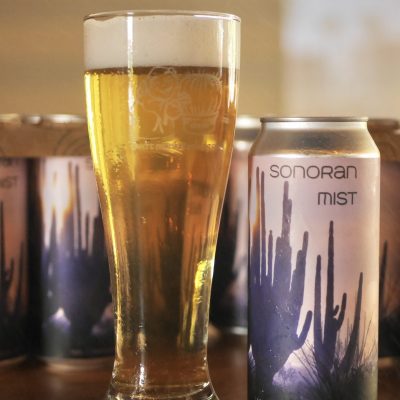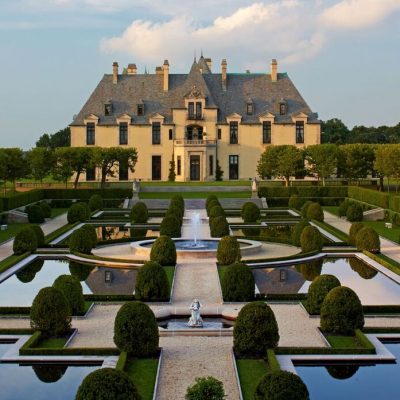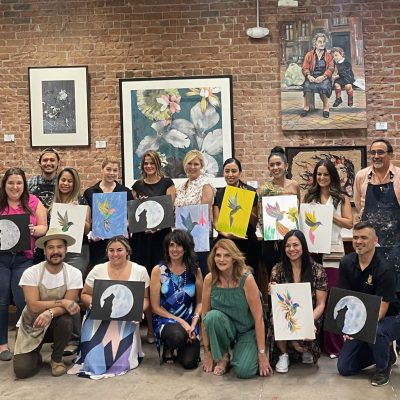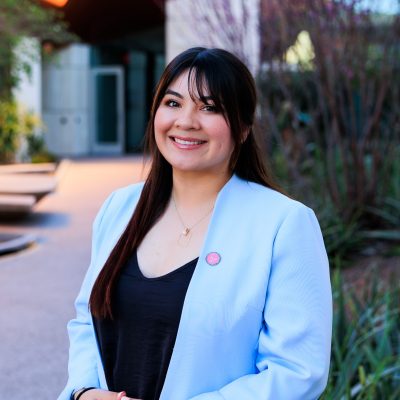Next Doors: Coming to Grips with “The New Normal”

Valley arts and culture organizations fight to survive the pandemic
Survival. It’s a word that has taken on a much deeper meaning during the pandemic.
We’ve all been presented with a set of circumstances few of us could have imagined. The ripple effect on everyday life has been the most significant change any of us has seen in our lifetimes. Entire industries have all but shut down, and the way we approach our daily lives has fundamentally changed.
Forget about the personal and public health implications of the word “survival” for a moment. “Survival” is now a business strategy, especially for organizations in arts and culture. We’re all being presented with agonizingly difficult decisions to make on a day-to-day basis. But for those running museums, performing arts organizations or other entities in the arts and culture space, those decisions are exceedingly complicated.
This is a “no judgment” zone, by the way. I’m not here to moralize whether an organization should or should not open — although I will say that if they can safely present their programming and fight for their survival, and the powers that be allow them to open, then I’m all for it. If you feel like we should be more locked down than we are right now to fight off the COVID-19 pandemic, then I, by all means, understand your viewpoint and don’t necessarily disagree.
But let’s look at three examples, to give you a sense of what the arts and museums are struggling with. I just want to convey how some of the decisions you’ve seen have been made, and the arduous and thorough thought process behind those choices.
Desert Botanical Garden
The Garden has reopened with limited occupancy and reservations required, with some indoor areas closed. Obviously, the Garden enjoys an advantage when dealing with the pandemic in that it’s outside, providing for a more naturally safe environment. Still, not every outdoor-focused organization has felt comfortable making the same choice.
“The decision was quite difficult, as there is no easy answer to the dual challenge of protecting everyone’s health and our staff’s financial security,” said Kenneth Schutz, the Dr. William Huizingh executive director of the Garden. “We focused first on the safety of our staff and visitors, and when we found a way to keep everyone safe, we opened the Garden on a limited basis. We insist on mask-wearing, social distancing and only allow a limited number of guests in the Garden at any one time.”
Schutz said they’ve not had any moments of concern to this point, and are grateful to be able to provide an outdoor opportunity for Valley residents to engage with nature.
“The reaction has been very positive,” Schutz said. “By allowing our guests to be outside, enjoying nature and exercising, we are providing a valuable community service. I’m grateful that we have been able to adapt to these extraordinary times and that we can continue to offer a place of respite for everyone.”

The Heard Museum
The Heard was one of the first cultural organizations in town to reopen, and while some closed again as COVID-19 rates spiked in June, the Heard has been able to ride it out without closing again.
“Our primary focus is providing a safe environment for our visitors and staff by requiring face coverings, limiting attendance to 100 visitors per hour or 240 per day, less than 30 percent of our capacity, and requiring social distancing,” said David Roche, Dickey Family CEO and director of the Heard. “In addition, we are continuously sanitizing all public spaces throughout the campus, maintaining Plexiglas barriers between staff and visitors, and providing complimentary styluses for those who wish to use our interactive displays.”
Roche said patrons have been very respectful of the new guidelines.
“Visitors have been gracious and thankful for the face-covering requirement,” he said. “We’ve also received a number of comments that visitors are impressed with the new safety protocols that we’ve put in place to help them feel safe during their museum visit.” However, some other museums in the Valley — including the Arizona Science Center and the Phoenix Zoo — opened on a limited basis only to close when COVID-19 cases spiked.
Arizona Opera
Nothing in the arts and culture space has been hit harder than the performing arts, for obvious reasons. And with no end to the pandemic in immediate sight, performing arts organizations are having to make some extraordinarily difficult decisions. From a public performance standpoint, 2020 is pretty much a loss.
It’s making it to 2021 that becomes the challenge.
The Arizona Opera is doing its best to make the upcoming 2020-21 season engaging for patrons, focusing on a series of outdoor performances announced in late July. The details of these performances are being fleshed out, but will also include a virtual component.
“Our patrons have clearly expressed that they remain committed to staying connected with Arizona Opera and our art form, but that they are not ready to return to an in-theater setting under current circumstances,” said Arizona Opera’s president and general director, Joseph Specter. “We are determined, nevertheless, to continue serving communities throughout our state and beyond through a variety
of outdoor and digital offerings that take advantage of the beauty of Arizona during the opera season.”
But other arts organizations might not be able to make virtual or outdoor performances work — and frankly, no one knows what in-person performances will look like in the coming months, and when they will be able to take place. So, many organizations across the country are punting on 2020-2021, and instead focusing on the hopes of a robust comeback in fall 2021.
No Easy Answers
Look, every decision is hard right now. And if you own a business or run a nonprofit, you know that your organization’s very survival is dependent on the hardest question we’ve ever been presented with as a society — how do we continue to function, and at the same time keep people safe?
There are no easy answers, of course. The only easy thing to understand is that we need to support the arts — sigh, now more than ever. Whether they’re able to open their doors or not, it’s critical that we help them make it to the other side of this public health crisis.
So do what you think is right, and do what you feel is best for you and the arts organizations you love.
If that means going out, then go out. If not, and you have the means to help, then get your checkbook out. If you do, when all of this is over, we’ll enjoy and savor the arts more than we ever have before.






